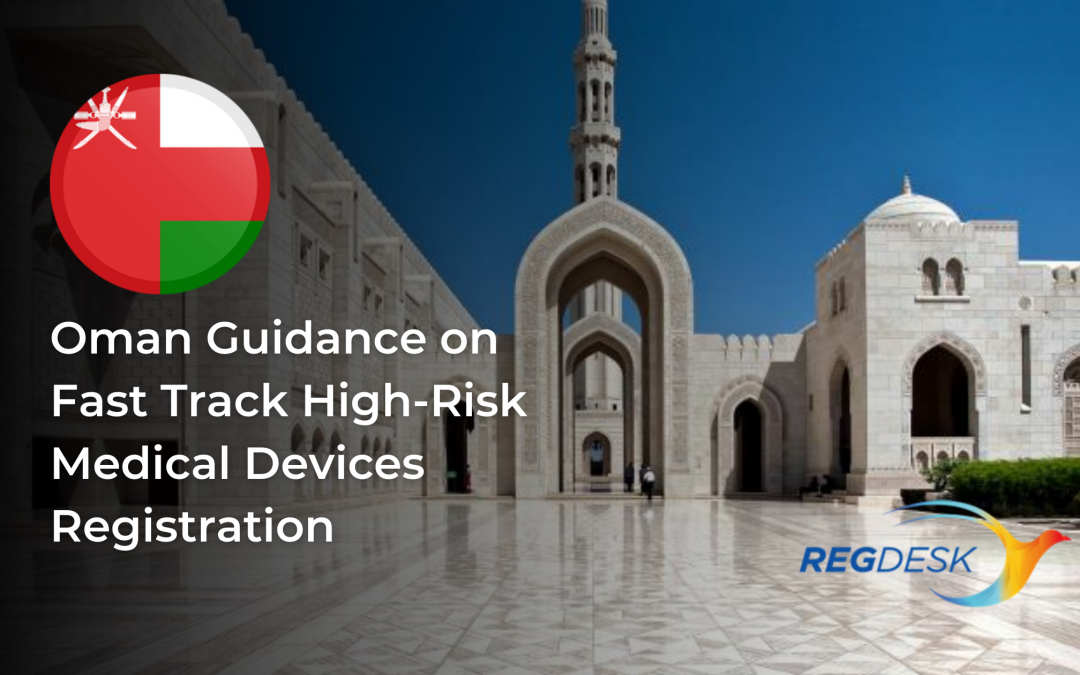The Directorate General of Pharmaceutical Affairs and Drug Control, the country’s regulating authority in the sphere of healthcare products, has published a guidance document dedicated to the regulatory requirements related to the registration of high-risk medical devices under the Fast Track procedure.

The document is intended to provide additional clarifications regarding the applicable regulatory framework, as well as recommendations to be considered by medical device manufacturers and other parties involved in operations with medical devices. The authority encourages all interested parties to familiarise themselves with the present guidance, as well as any other guidance issued by the authority on the matter, especially in terms of risk-based classification – should the class of the device indicated in the application be incorrect, the applicant would have to submit a new application and start the process from the very beginning, which will increase the actual costs and also the time needed to complete the process. It is important to mention that the authority has already issued a guidance document dedicated to the registration of high-risk medical devices under the usual pathway.
Table of Contents
Regulatory Background
First of all, the document provides the definitions of the most important terms and concepts used in the context of the document, such as “medical device”, “high-risk medical device”, “registration”, “listing”, “label”, “manufacturer”, “accessories”, “accessory to a medical device”, “risk”, and “intended use/purpose”.
Under the general rules, medical devices should not be marketed or used in the country before the listing in the appropriate database. Moreover, in case of any changes to medical devices already placed on the market as per above, the manufacturer shall duly update the relevant technical documentation and keep it in place to be able to provide it to the authority upon request.
In the context of the Fast Track registration pathway, the document provides the following requirements:
- Shall be presented in a clear, organized, readily, searchable and unambiguous manner;
- Apply for registration through the online portal via the [appropriate] link;
- Choose jurisdiction approval KSA with valid certificate;
- Await certificate validation approval;
- If approved, the dossier file section requirements should be filed within 6 months from the first approval;
- Payment of fees should be made according to risk classification.
The authority additionally mentions that it is entitled to introduce additional requirements apart from the ones described here above.
Essential Principles of Safety and Performance
Apart from the requirements for the application itself, the guidance also provides details regarding the essential principles of safety and performance the device should conform to. In particular, one of the annexes contains a checklist with all the principles listed, where the applicant shall indicate whether the particular principle applies to the medical device in question, the methods of conformity, and also provide references to specific documents where the necessary details are reflected. All the principles are divided into several sections, namely:
- General Requirements.
- The design of any medical device intended to be marketed and used in the country should ensure that the device will not expose patients to additional risks provided it is used strictly by the instructions for use provided by the manufacturer and is used by a person having necessary skills and qualifications.
- The design of the device should be based on the state of the art and be in line with the general level of technology in the appropriate sphere. The residual risk remaining after the manufacturer has duly implemented all the measures necessary to mitigate the risks should not exceed the acceptable level. In this regard, the manufacturer shall identify the potential risks, reduce them to the lowest extent possible, ensure the residual risk is acceptable, and also inform the customers about the risks associated with the device.
- The way the device achieves its intended purpose should be in line with the definition of a medical device.
- The device should be resistant to the impact it could be potentially subject to during normal use in the appropriate use conditions.
- The packaging of the device should ensure it will remain safe and fully operational after being stored and transported by the appropriate requirements to be communicated by the manufacturer.
- The benefits must be determined to outweigh any undesirable side effects for the performances intended.
- Chemical, physical and biological properties.
- When developing and designing the device, the manufacturer shall pay special attention to the materials used and their compatibility. The choice of materials should be based on the intended use of the device, as well as the environment it should be used in.
- It is important to ensure the efficient mitigation of risks associated with contamination. In this regard, the authority additionally mentions that particular attention should be paid to tissues exposed and to the duration and frequency of exposure.
- In terms of materials, the manufacturer should also ensure the materials used are safe when contacting other materials or substances they may contact when the device is used for its intended purpose. For instance, this applies to medical devices intended to administer medicines – in such a case, the manufacturer should ensure compatibility with the medicinal products the device is intended to be used for.
- Should the medical device contain medicines itself, such medicines should be compliant with the applicable regulatory requirements medicinal products could be subject to.
- Additionally, the manufacturer should implement the measures necessary to prevent leaking from the device or to reduce the risks associated thereto to the lowest extent possible.
- It is also important to mitigate the risks associated with the unintentional ingress or egress of substances into or from the device.
- Infection and microbial contamination.
- When developing the device, the manufacturer should duly implement the measures necessary to reduce the risks associated with microbial contamination.
- Additional attention should be paid in case the device contains substances of biological origin.
- The device containing tissues and cells should also comply with any applicable regulatory requirements such device is subject to in its country of origin, especially in case it under the appropriate requirements it is subject to regulation as a medical device.
- The packing of a medical device that is supplied sterile should be designed in a way ensuring it remains sterile after being transported and stored within the whole expected period of shelf life.
- Moreover, sterilization should be carried out by applying the appropriate, validated methods. The whole manufacturing process for such devices should take place in the appropriate environment ensuring the sterility of medical devices manufactured.
In summary, the present guidance provides an overview of the applicable regulatory requirements for placing high-risk medical devices on the market under the Fast Track procedure. The document also highlights the most important aspects associated with the essential principles of safety and performance the device should comply with.
Sources:
How Can RegDesk Help?
RegDesk is a next-generation web-based software for medical device and IVD companies. Our cutting-edge platform uses machine learning to provide regulatory intelligence, application preparation, submission, and approvals management globally. Our clients also have access to our network of over 4000 compliance experts worldwide to obtain verification on critical questions. Applications that normally take 6 months to prepare can now be prepared within 6 days using RegDesk Dash(TM). Global expansion has never been this simple.


